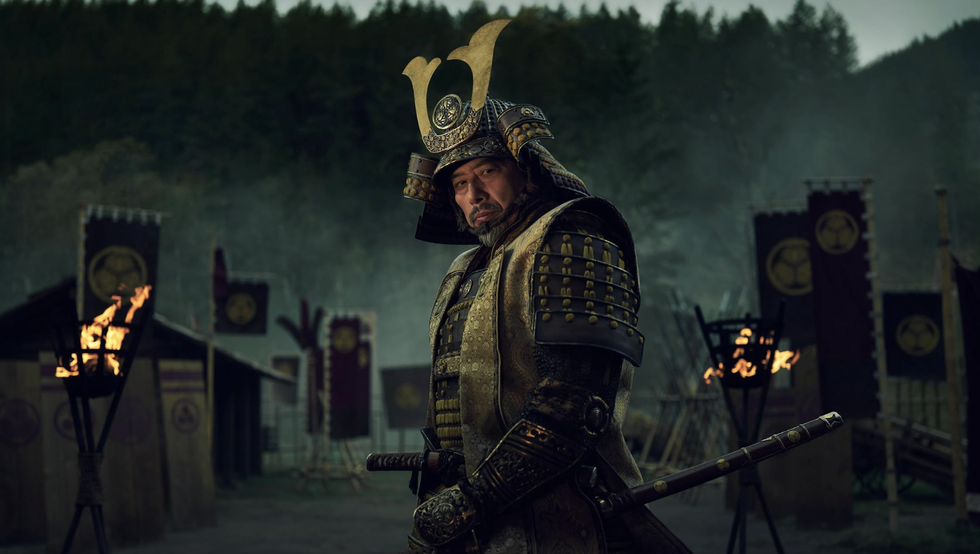FX’s buzzy new series is based on a real Japanese power struggle.
If Shōgun’s events feel like they’re based in historical fact, that’s because the story follows a real-life power struggle. Author James Clavell borrowed many historical figures from the seventeenth century for his 1975 novel of the same name—which greatly dramatized the story of the Tokugawa shogunate and the first Englishman to sail to Japan. His work of historical fiction even garnered a popular miniseries in 1980, which was such a hit that many cultural observers attributed the show’s success to the rising interest in sushi in the West.
Although Clavell beefed up both the story of John Blackthorne’s arrival in Japan and his influence on Tokugawa’s ascent, many of the characters and events depicted on Shōgun are inspired by real historical figures. The FX limited series is well into its planned ten episodes, and it’s already a hit among critics. Shōgun stars Hiroyuki Sanada (John Wick: Chapter 4) as Lord Tokugawa’s stand-in and Cosmo Jarvis (Persuasion) as John Blackthorne. But what’s fact and what’s fiction in the latest adaptation?
The events of the series begin with the death of Toyotomi Hideyoshi, who was the second Great Unifier of Japan. In Shōgun, he’s called the Taikō, the title given to a retired advisor of a former emperor. Hideyoshi carried on the work of Oda Nabunaga, the first Great Unifier of Japan, following nearly a century of civil war. After the Taikō died, a new path opened for infighting. Five great lords, called daimyo, vied for the title of shōgun, the de facto ruler of Japan.
Japan feared another century of conflict after the Taikō’s death, so he established the five elders who would rule in his place. A prominent member among the five was Ieyasu Tokugawa, renamed Yoshii Toranaga in Shōgun and brought to life by Sanada. Over the span of just two years, he leveraged his power and close connection to the Taikō to become the new shōgun. Assembling his forces, he took Osaka Castle and easily won the bloody battle of Sekigahara—one of the most important battles in Japanese history.
Around this time, Tokugawa met William Adams, the first Englishman to sail to Japan. He eventually became a trusted advisor to Tokugawa, who was impressed by his knowledge of Western ships and navigation. The lord commissioned Adams to Japanese ships—and Adams later replaced Jesuit Padre João Rodrigues as the shōgun’s official interpreter. Adams’s counterpart on the miniseries, John Blackthorne (played by Jarvis), plays a much more significant role in Tokugawa’s rise to power than he did in real life. What really won Tokugawa the shogunate? It was military might.
In Shōgun, Tokugawa uses Blackthorne’s presence as a Protestant to sow disagreement among the Five Elders—some of whom profited from the nation’s Christian colonizers. Sure, the Five Elders demanding the persecution of one heretic among Tokugawa’s castle may be a tad far-fetched. But Blackthorne acts more as the story’s powder keg, so as not to dive too far back into Japanese politics. Clavell also added a relationship between Blackthorne and Toda Mariko (Anna Sawai), whose real-life counterpart never even met Adams.
That isn’t to say that Tokugawa and Adams weren’t friends in real life. According to Smithsonian Magazine, the two wrote many letters to each other, and the powerful daimyo was fascinated by Adams’s knowledge of the globe. Tokugawa also greeted the Englishman personally during his trips to Japan, even after he had risen to the shogunate. Eventually, Adams was gifted the honorary title of samurai. Meanwhile, Tokugawa remained in power until his death in 1616. He constructed the great Edo Castle—the largest castle in all of Japan—and the Tokugawa shogunate ruled the country for the next 250 years.






